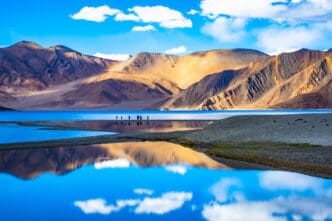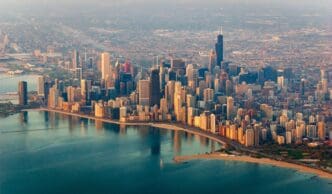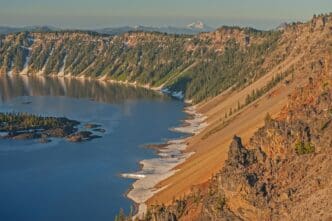For millennia, travelers have journeyed to Rome, the Eternal City, to stand in the shadow of history and witness the enduring legacy of an empire that shaped the Western world. For any modern visitor, navigating its sprawling, layered landscape of ancient ruins, Renaissance art, and vibrant street life can be overwhelming. This guide is for those travelers, seeking to distill the essence of Rome into its ten most essential sights, providing a definitive roadmap to experiencing the city’s profound historical, cultural, and artistic treasures, best enjoyed during the temperate spring and autumn shoulder seasons to avoid the peak summer crowds and heat.
The Colosseum: Echoes of the Empire
No symbol of Rome is more iconic than the Colosseum. This massive stone amphitheater, officially known as the Flavian Amphitheatre, was completed in 80 A.D. and remains the largest ancient amphitheater ever built. It once hosted gladiatorial contests, public spectacles, animal hunts, and dramatic reenactments for audiences of up to 80,000 people.
Walking through its arches and onto the reconstructed arena floor, you can almost hear the roar of the ancient crowds. The sheer scale of the structure is breathtaking, and its complex history offers a powerful glimpse into the brutal entertainment and sophisticated engineering of the Roman Empire. The hypogeum, the labyrinthine network of tunnels and chambers beneath the arena floor where gladiators and animals were held, is a particularly fascinating area to explore.
To make the most of your visit, purchasing tickets online well in advance is non-negotiable. This allows you to bypass the notoriously long ticket queues. Consider a guided tour that includes access to the arena floor and the underground levels for a more complete and contextualized experience.
The Roman Forum and Palatine Hill: The Heart of Ancient Rome
Adjacent to the Colosseum lies the sprawling archaeological site of the Roman Forum and Palatine Hill. This was the vibrant center of public life in ancient Rome, home to government buildings, temples, marketplaces, and triumphal arches. Walking the Via Sacra, the main road through the Forum, you are treading the same stones as caesars, senators, and citizens from over two thousand years ago.
Key structures to identify include the ruins of the Temple of Saturn, the Arch of Titus with its detailed reliefs depicting the spoils of Jerusalem, and the Curia Julia, the ancient Senate House. From the Forum, a path leads up to Palatine Hill, the most central of Rome’s seven hills. According to legend, this is where Romulus and Remus were found by the she-wolf and where Romulus founded the city.
Later, it became the exclusive residential area for Rome’s emperors, and you can wander through the ruins of their opulent palaces. The view from Palatine Hill, looking down over the Forum on one side and the Circus Maximus on the other, is one of the most evocative in all of Rome. A combined ticket for the Colosseum, Forum, and Palatine Hill is standard and offers a full day of historical immersion.
The Pantheon: A Marvel of Architecture
The Pantheon is a testament to the genius of Roman architects and one of the best-preserved of all ancient Roman buildings. Originally built as a temple to all the gods, it was converted into a Catholic church in the 7th century, which is the primary reason for its remarkable state of preservation. Its most stunning feature is the massive, unreinforced concrete dome with its famous central oculus, or eye, open to the sky.
Standing in the center of the rotunda and looking up at the oculus is a truly humbling experience. The perfect geometry and the beam of light that moves across the interior throughout the day create a serene and almost mystical atmosphere. The Pantheon also serves as the final resting place for several notable Italians, including the Renaissance master Raphael and two Italian kings.
Vatican City: A Nation of Art and Faith
Though it is the world’s smallest independent state, Vatican City packs an unparalleled concentration of artistic and religious treasures. It is a pilgrimage site for millions and requires at least half a day, if not more, to appreciate fully. The experience is best broken down into its three main components.
St. Peter’s Basilica
The sheer scale of St. Peter’s Basilica is designed to inspire awe. As the largest church in the world, it is a masterpiece of Renaissance architecture. Upon entering, your eyes are immediately drawn to Michelangelo’s magnificent dome and Bernini’s soaring bronze baldacchino over the main altar. Don’t miss Michelangelo’s sublime Pietà sculpture, located just to the right of the entrance.
The Vatican Museums
The Vatican Museums contain one of the greatest art collections on Earth, with miles of galleries showcasing treasures accumulated by popes over centuries. Highlights include the stunning Gallery of Maps, the classical sculptures in the Pio-Clementino Museum, and the Raphael Rooms, which are often overshadowed by the Sistine Chapel but are masterpieces in their own right.
The Sistine Chapel
The journey through the Vatican Museums culminates in the Sistine Chapel. Here, you can gaze upon Michelangelo’s breathtaking ceiling frescoes depicting scenes from the Book of Genesis and his powerful Last Judgment on the altar wall. It is a sacred space, and visitors are asked to maintain silence and refrain from taking photographs to preserve both the sanctity and the delicate artwork.
The Trevi Fountain: Baroque Splendor
No trip to Rome is complete without a visit to the Trevi Fountain, the largest and most famous Baroque fountain in the world. Dominated by the central figure of Oceanus riding a shell-shaped chariot, the fountain is a riot of dynamic sculptures and cascading water. It is a stunning work of art that feels alive.
Tradition holds that if you toss a coin over your left shoulder with your right hand into the fountain, you are destined to return to Rome. The fountain is immensely popular, so for a more peaceful experience and the best photo opportunities, visit very early in the morning or late at night when the crowds have thinned and the monument is beautifully illuminated.
The Spanish Steps: A Grand Staircase
The Spanish Steps, or Scalinata di Trinità dei Monti, are a monumental staircase of 135 steps climbing a steep slope between the Piazza di Spagna at the base and the Trinità dei Monti church at the top. For centuries, this has been a popular meeting place for locals and tourists alike. At the bottom of the steps sits the charming Fontana della Barcaccia, a fountain designed by Pietro Bernini and his more famous son, Gian Lorenzo Bernini.
While you can no longer sit on the historic steps to preserve them, climbing to the top rewards you with a wonderful view of the city’s rooftops and the bustling piazza below. The surrounding streets, particularly Via Condotti, are home to Rome’s most exclusive high-fashion boutiques.
Trastevere: The Soul of Old Rome
For a taste of Roman life away from the monumental ruins, cross the Tiber River into the charming neighborhood of Trastevere. With its narrow, ivy-draped cobblestone streets, medieval houses, and lively piazzas, Trastevere feels like a village within the city. It’s the perfect place to simply wander without a map.
During the day, you can explore artisan workshops, quirky boutiques, and the beautiful Basilica of Santa Maria in Trastevere with its glittering 12th-century mosaics. As evening falls, the neighborhood comes alive as locals and visitors fill the countless authentic trattorias, osterias, and bars, making it one of the best areas in Rome for a memorable dinner.
Galleria Borghese and Gardens: An Artistic Haven
Housed in a stunning 17th-century villa, the Galleria Borghese contains one of the world’s most impressive collections of art. Its fame rests on its incredible collection of sculptures by Gian Lorenzo Bernini, including Apollo and Daphne and The Rape of Proserpina, which seem to defy the hardness of marble. The gallery also holds several masterpieces by the painter Caravaggio.
What makes a visit here so special is the intimacy. Visitor numbers are strictly controlled, and you must book your timed, two-hour slot weeks or even months in advance. After your visit, take time to stroll through the surrounding Borghese Gardens, a vast and beautiful park that offers a peaceful respite from the city’s hustle.
Castel Sant’Angelo: Mausoleum to Fortress
Looming over the Tiber River, the imposing cylindrical structure of Castel Sant’Angelo has played many roles throughout Rome’s history. It was originally built by Emperor Hadrian as a mausoleum for himself and his family. Over the centuries, it was converted into a papal fortress, a prison, and now a museum.
Exploring its ramparts, apartments, and courtyards reveals these different layers of history. A key feature is the Passetto di Borgo, an elevated, fortified corridor that connects the castle to the Vatican, serving as an escape route for popes in times of danger. The highlight of a visit is the panoramic view from the top terrace, offering an unforgettable perspective of St. Peter’s Basilica and the bridges over the Tiber.
Capitoline Hill: Michelangelo’s Piazza
Capitoline Hill, or Campidoglio, is another of Rome’s seven hills and holds deep historical significance as the religious and political heart of the ancient city. The stunning piazza that exists today was designed in the 16th century by Michelangelo. His brilliant design uses perspective to create a sense of harmony and grandeur.
The piazza is flanked by three palazzi, two of which house the Capitoline Museums, considered the world’s first public museums. They contain a wealth of ancient Roman bronze and marble statues, including the original equestrian statue of Marcus Aurelius (a replica stands in the center of the piazza). For one of the best views in the city, walk to the back of the piazza for a breathtaking panorama over the Roman Forum.
Conclusion: Embracing the Eternal City
Rome is a city that rewards curiosity and patience. While these ten sights represent the pinnacle of what the city has to offer, they are merely the starting point of a deeper journey. Each ruin, piazza, and fountain tells a story, contributing to a living museum that has captivated the world for centuries. By planning ahead, embracing the occasional chaos, and allowing yourself to wander, you can fully immerse yourself in the unparalleled beauty and history of the Eternal City.








